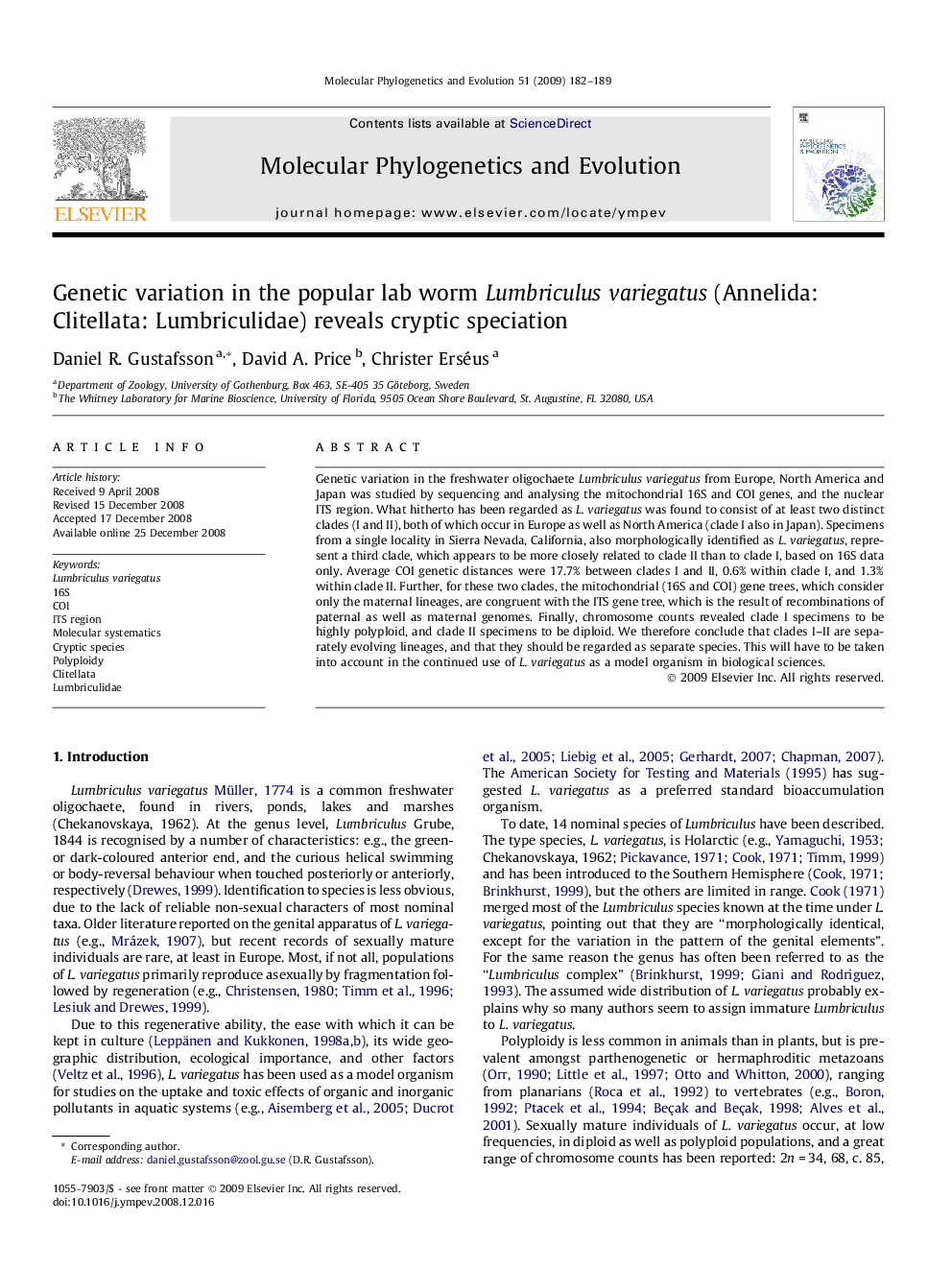| Article ID | Journal | Published Year | Pages | File Type |
|---|---|---|---|---|
| 2834363 | Molecular Phylogenetics and Evolution | 2009 | 8 Pages |
Genetic variation in the freshwater oligochaete Lumbriculus variegatus from Europe, North America and Japan was studied by sequencing and analysing the mitochondrial 16S and COI genes, and the nuclear ITS region. What hitherto has been regarded as L. variegatus was found to consist of at least two distinct clades (I and II), both of which occur in Europe as well as North America (clade I also in Japan). Specimens from a single locality in Sierra Nevada, California, also morphologically identified as L. variegatus, represent a third clade, which appears to be more closely related to clade II than to clade I, based on 16S data only. Average COI genetic distances were 17.7% between clades I and II, 0.6% within clade I, and 1.3% within clade II. Further, for these two clades, the mitochondrial (16S and COI) gene trees, which consider only the maternal lineages, are congruent with the ITS gene tree, which is the result of recombinations of paternal as well as maternal genomes. Finally, chromosome counts revealed clade I specimens to be highly polyploid, and clade II specimens to be diploid. We therefore conclude that clades I–II are separately evolving lineages, and that they should be regarded as separate species. This will have to be taken into account in the continued use of L. variegatus as a model organism in biological sciences.
